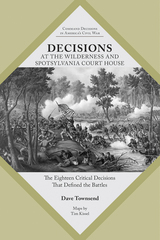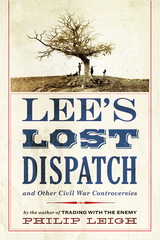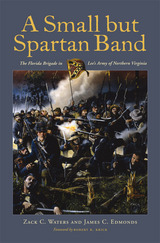
The successive battles of The Wilderness and Spotsylvania Court House opened Lt. Gen. Ulysses S. Grant’s 1864 Overland Campaign. As the first confrontation between Union and Confederate leaders Grant and Gen. Robert E. Lee, these two bloody battles signaled the new reality of war. The fighting at the Battle of The Wilderness, immediately followed by the Battle of Spotsylvania Court House, was costly for both sides, and while the Union army could replace its losses, Lee’s Army of Northern Virginia could not. It would be exactly one year from Grant’s orders to Gen. George G. Meade stating that Lee’s army would be his objective until the surrender at Appomattox.
Decisions at The Wilderness and Spotsylvania Court House introduces readers to critical decisions made by Confederate and Union commanders throughout the two costly meetings. Dave Townsend examines the decisions that prefigured the action and shaped the course of each battle as it unfolded. Rather than a linear history of the battles, Townsend’s discussion of the critical decisions presents readers with a vivid blueprint of the battles’ developments. Exploring the critical decisions in this way allows the reader to progress from a sense of what happened in these battles to why they happened as they did.
Complete with maps and a guided tour, Decisions at The Wilderness and Spotsylvania Court House is an indispensable primer, and readers looking for concise introductions to the battles can tour this sacred ground—or read about it at their leisure—with key insights into the battles and a deeper understanding of the Civil War itself.
Decisions at The Wilderness and Spotsylvania Court House is the seventh in a series of books that will explore the critical decisions of major campaigns and battles of the Civil War.

Which over-arching decisions made by the Confederacy or Union had a greater effect on the course of the war than generally thought? Were there lauded command changes that may not have been as beneficial as presumed? How intertwined were the business aspirations on both sides of the conflict and what role did disinformation play in key battles? In Lee’s Lost Dispatch and Other Civil War Controversies, New York Times “Disunion” contributor Philip Leigh presents twelve stories from these turbulent times that afford a better understanding of how the war unfolded and how it was fought. The stories range from the Union’s delayed introduction of repeating arms and why a commercial steamer and not a warship was sent to relieve Fort Sumter to how Robert E. Lee’s critical dispatch at the battle of Antietam may have been lost and whether Southern poverty is the most protracted legacy of the war. Written to promote discussion and debate, this volume will intrigue those who enjoy Civil War history and contemplating alternatives to many assumed conclusions.

With a tally of more than five thousand killed, twenty thousand wounded, and three thousand missing, the Battle of Antietam made September 17, 1862, the deadliest day of combat in American history. In Opposing the Second Corps at Antietam, Antietam scholar Marion V. Armstrong Jr. completes his magisterial study of Antietam begun in Unfurl Those Colors! by examining Robert E. Lee’s leadership at the climactic battle in the Confederate invasion of Union territory.
Eminent Civil War historians consider Antietam the turning point of the war. Hoping to maintain the initiative they had gained at the Second Battle of Bull Run, Confederate leaders looked to a stunning victory on Northern soil to sour Northern sentiment on the war as well as to coax European powers to recognize the fledgling Confederacy. Having examined McClellan’s command and role at Antietam in Unfurl Those Colors!, Armstrong now recounts in riveting detail Lee’s command decisions and their execution in the field, drawing on a superlative collection of first-person accounts by Confederate veterans to narrate the cataclysmic struggle between Lee and McClellan.
Armstrong sets the stage with a lively recap of the political and military events leading up to the early fall of 1862 and foreshadowing the conflagration to come on September 17. Each chapter then traces a critical section of the battle, the fight for the West Woods and the bloody engagement of the Sunken Road. Armstrong augments this collection with an exceptional set of maps, which will be valued by scholars, readers, and visitors to the battlefield. These unique maps delineate troop movements in intervals as brief as fifteen minutes, bringing to life the fluid, mutable lines that characterize the glory and horror of Antietam.
Either together with Unfurl Those Colors! or as a stand-alone account of the Confederate side of the battle, Opposing the Second Corps at Antietam provides the fullest possible understanding of the experience of Confederate soldiers at Antietam.

READERS
Browse our collection.
PUBLISHERS
See BiblioVault's publisher services.
STUDENT SERVICES
Files for college accessibility offices.
UChicago Accessibility Resources
home | accessibility | search | about | contact us
BiblioVault ® 2001 - 2024
The University of Chicago Press









